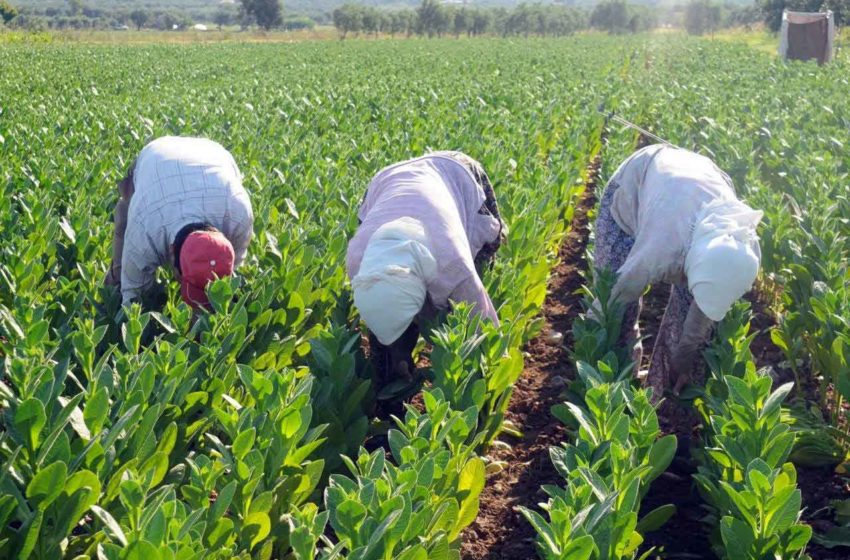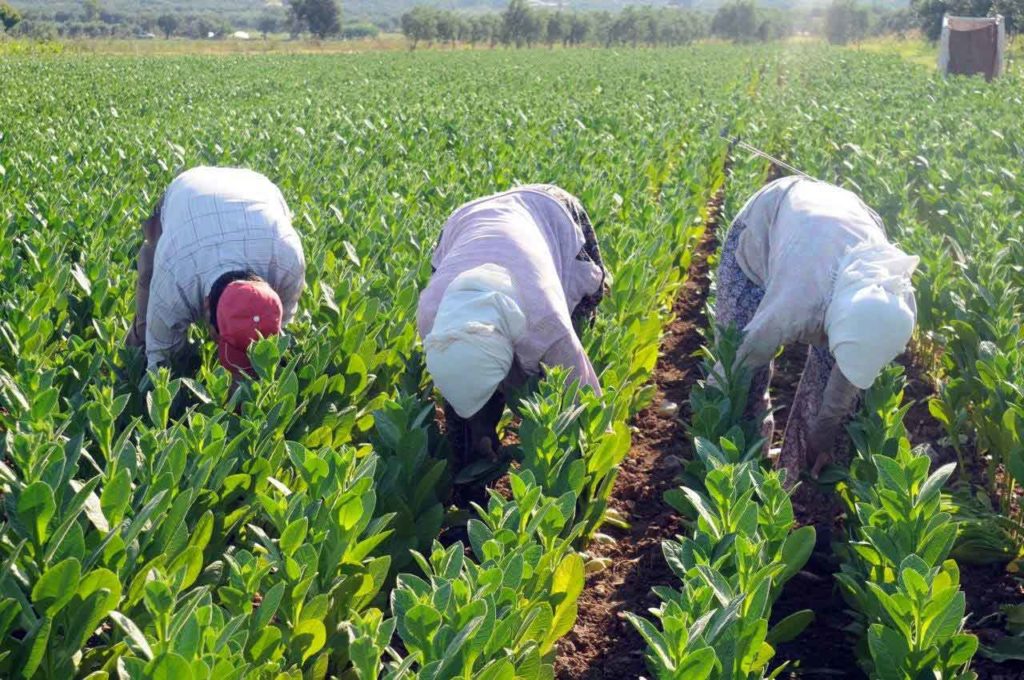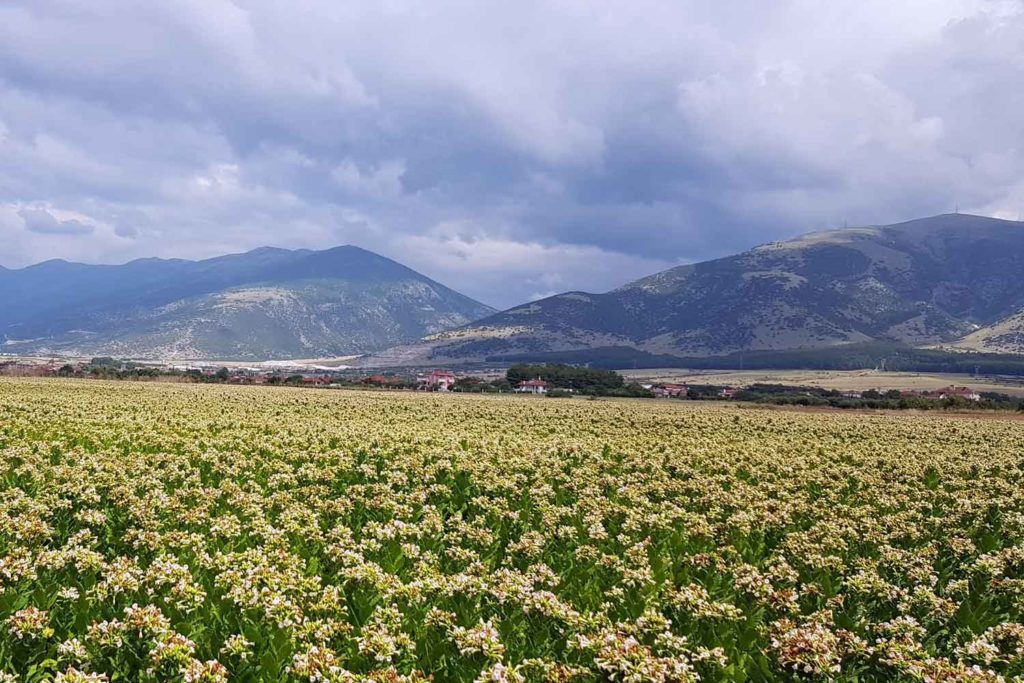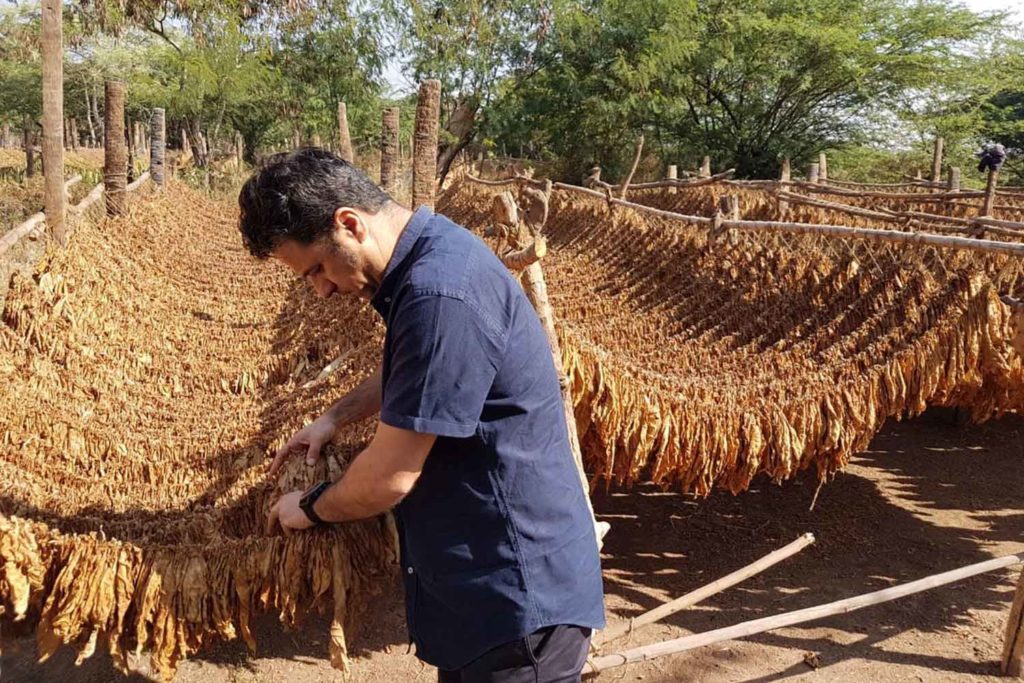Growing Pressure
- Also in TR Leaf Print Edition
- January 1, 2023
- 0
- 8 minutes read


Inflation and competition from alternative crops are compounding the traditional challenges facing oriental tobacco.
By Stefanie Rossel
For more than 100 years, oriental tobacco has been used as a key ingredient in American blend cigarettes, but the history of this aromatic, small-leafed variety goes back much further. In the early 17th century, the Spanish introduced the tobacco plant to the Ottoman Empire. The Turks developed their own cultivation processes. It is assumed that oriental tobacco emerged as a mutation spawned by the growing countries’ climatic conditions, poor soil and the “starvation” method of cultivation in which the plants are placed very close to one another. Today, classical oriental tobacco is mainly grown in the countries of the eastern Mediterranean, with Turkiye and Greece being the biggest producers followed by North Macedonia and Bulgaria. Thailand, India, Albania, the CIS countries and China also cultivate oriental varieties.
Compared to other tobaccos, oriental is a niche product. Due to the hot and arid conditions in which it is grown, the leaf contains significantly lower levels of nicotine than flue-cured Virginia or burley, and harvesting and curing methods are more pristine: The leaves are picked by hand and sun-dried for about a week, a process that enables the leaves to retain some of the natural sugars, which provide a hint of sweetness and a unique taste.
While the authenticity of the cultivation practices may appeal to some, they also present a major challenge. The oriental tobacco sector is struggling to replace aging farmers and working hard to become more efficient and sustainable.

(Photo: Missirian)
Smaller Crop Size
The summer of 2022 was hot and dry, especially in southern Europe. In Turkiye, it was the second year that the growing season suffered from drought, according to Zafer Atici, owner and managing director of Prestige Leaf, a global leaf supplier based in Hong Kong. “Planting was delayed beyond the usual window,” he says. “Extreme hot weather in July and August also adversely affected the growth and consequently yield of plants in the field. In some areas, production dropped to half. As Turkish tobaccos are mostly sun-cured, the curing period was better without any rainfall.”
Turkiye’s 2022 oriental crop was almost identical to the 2021 crop, which was one of the smallest in history, notes Atici. “While an increase was expected, the prevailing weather conditions that were similar all over Europe last summer took their toll on the yields,” he says. “The Izmir variety, which is the flag carrier, may result in a total of 42 million kg, with 35 million kg in the western part in the Aegean Region and 7 million kg in the eastern part of Turkiye, respectively.”
In other regions, the crops were also smaller than in previous seasons while the quality was rated normal to good. “Quality has not been negatively affected by the dry summer,” says Dora Gleoudis, managing director of Greek leaf tobacco exporter Nikos Gleoudis Kavex. “In general, such weather conditions are affecting oriental tobaccos mainly in regard of reduced yields.”
According to Nikos Tzoumas, managing director of Greek leaf merchant Missirian, the country’s oriental leaf production decreased from 11,500 tons in 2021 to 8,500 tons in 2022. Production of Basma amounted to 5,400 tons, and production of Katerini was 3,100 tons in 2022.
In Bulgaria, 2022’s crop shrank by 18 percent to 4,500 tons compared to 2021. North Macedonia by contrast increased its crop from a record low of 18,700 tons in 2021 to 21,000 tons this season. “The weather conditions that prevailed in the Balkan areas were not extremely dry,” explains Tzoumas. “The temperatures were quite mild—close to the historical average—throughout the cultivation season and very favorable during the last part of the curing period with a lot of sunshine. The rainfalls were short in the first half of the season and at normal levels later. The farmer yields were kept at regular levels and were not affected by climate change.”
Prior to this summer’s weather conditions, the sector confronted the challenges brought by the outbreak of Covid-19. Gleoudis says the pandemic had a minor impact on tobacco production in Greece and the Balkans. “However, there have been serious delays in the shipping schedules due to the lack of available containers, but this has been drastically improved lately,” she says.
In 2021, Greek production was affected by a lack of external workers, mainly from Bulgaria and Albania, due to travel restrictions, according to Tzoumas. “The production of 2022 was scheduled to be at lower levels, with the Greek farmers being informed about the workers’ absence well in advance,” he says.
Unsurprisingly, the war in Ukraine, which has created an energy crisis and driven inflation to new heights, has made life more difficult for oriental farmers. “Now, the challenge is to be able to produce agricultural products, including tobacco plants and leaf, under current economic conditions,” says Atici. “Increases in the oil prices have affected all crop inputs for the growers. In Turkiye, the gasoline price increased four times. With the war, wheat prices soared, and we also saw some areas switching production from tobacco to wheat. Less energy-dependent crops like oregano were also increasingly planted. The leaf price will increase due to increased costs.”
In Greece, farmers’ production cost increased at an average of 25 percent in 2022, says Tzoumas. “The factory costs of supplies, such as transportation, energy and packing materials, have increased by 25 to 200 percent, depending on the category.”
Gleoudis says that the combination of higher cost, higher inflation and reduced yields are forcing the dealers to pay growers better prices. In addition to covering the cost of production and offering farmers a modest standard of living, this helps secure the future production of oriental tobacco, which is increasingly facing competition from alternative crops, such as wheat, corn and sunflower, which demand less labor and currently attract high prices due to the Ukraine crisis.

Changes Required
So does it still pay for growers to cultivate oriental tobacco under the given circumstances? Speaking for Turkiye, Atici says one of the main concerns is the decrease in the rural population as many people migrate to the cities in search of better economic opportunities.
“Oriental tobaccos could be viable to grow,” he notes. “However, some things need to change. For example, there should be less reliance on conventional energy and more use of renewables, along with smart mechanical tools instead of intensive labor usage, in particular in harvesting, as well as a better fertilizer regimen and financial improvement for crop input via cooperatives, private companies or government bodies. A good example is what Prestige Leaf does in India by providing fertilizers to growers as a financial help. The advantage of oriental growing is that it is an environmentally friendly crop. It requires very little irrigation and fertilizer and cures under the sun.”
In recent years, stakeholders have attempted to improve the efficiency of harvesting in the oriental tobacco sector. In 2020, an oriental tobacco harvesting machine entered the market. For the time being, however, picking the crop remains a manual job for most growers. The harvesting machine did not create the desired impact, according to Atici, citing high startup costs and insufficient efficiency gains.
For farmers with more than 10 ha of land, however, the harvesting machine ended up being a successful tool, says Tzoumas. “In 2020, it did not have the support it needed from the market, though, as the appearance of the final product could not match the one of a handpicked crop,” he says. “In other products, such as cotton, for example, this case was solved many years ago. Today, it is clear that even in oriental tobaccos, there is no future if it will not be fully mechanized, considering the lack of field workers and increase of wages.”
Oriental crops currently struggle to meet the demand levels, he says. “Farmers receive the messages and react fast to the new facts. The viability of the crop, however, depends not only on the demand but also on the alternative crops’ income, which is mainly food, farmers receive.”

